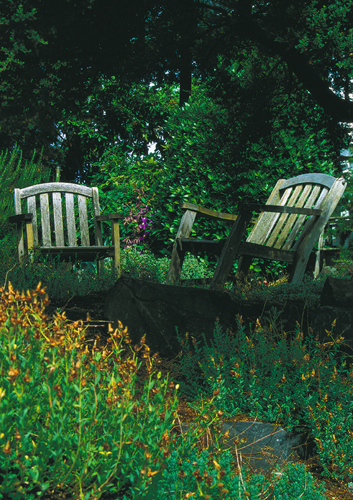2007 Classes and Celebrations -
The New Western Garden - Sunday, July 29
 Joy Creek Nursery offers customers educational classes, workshops and special events throughout the gardening season. Classes are conducted in the outdoor classroom in our gardens, 18 miles north of Portland at 20300 NW Watson Rd in Scappoose. Please follow the signs to our workshop parking when arriving at the nursery.
Joy Creek Nursery offers customers educational classes, workshops and special events throughout the gardening season. Classes are conducted in the outdoor classroom in our gardens, 18 miles north of Portland at 20300 NW Watson Rd in Scappoose. Please follow the signs to our workshop parking when arriving at the nursery.All Sunday classes begin at 1:00 p.m. and are free to the public except as noted.
July 29 - The New Western Garden
Gardeners in the Northwest are facing all kinds of challenges - smaller urban garden spaces, growing pressures on limited resources like water and the shift to more environmentally friendly practices are but a few. Gardeners are also challenged to find ways to incorporate shrubs, trees, perennials and annuals in ways that mimic and complement our native landscape but still allow the freedom of personal expression. Paul Bonine will educate attendees about some exciting new plants that can meet these challenges.
Paul Bonine is co-owner of the wholesale nursery Xera Plants Inc. with his partner Greg Shepherd. He has worked in the nursery industry since 1992 beginning in Eugene and then moving to Portland. Paul's special interests include plants that are adapted to low water usage, perform well in the Portland area and expand the plant palette for Northwest gardeners. By the way, Paul is a Taurus.
© 2007 Joy Creek Nursery
Photo: Joy Creek Photo Archive © all rights reserved
Labels: classes, education, gardening, gardens, horticulture, Joy Creek, nursery, plants









